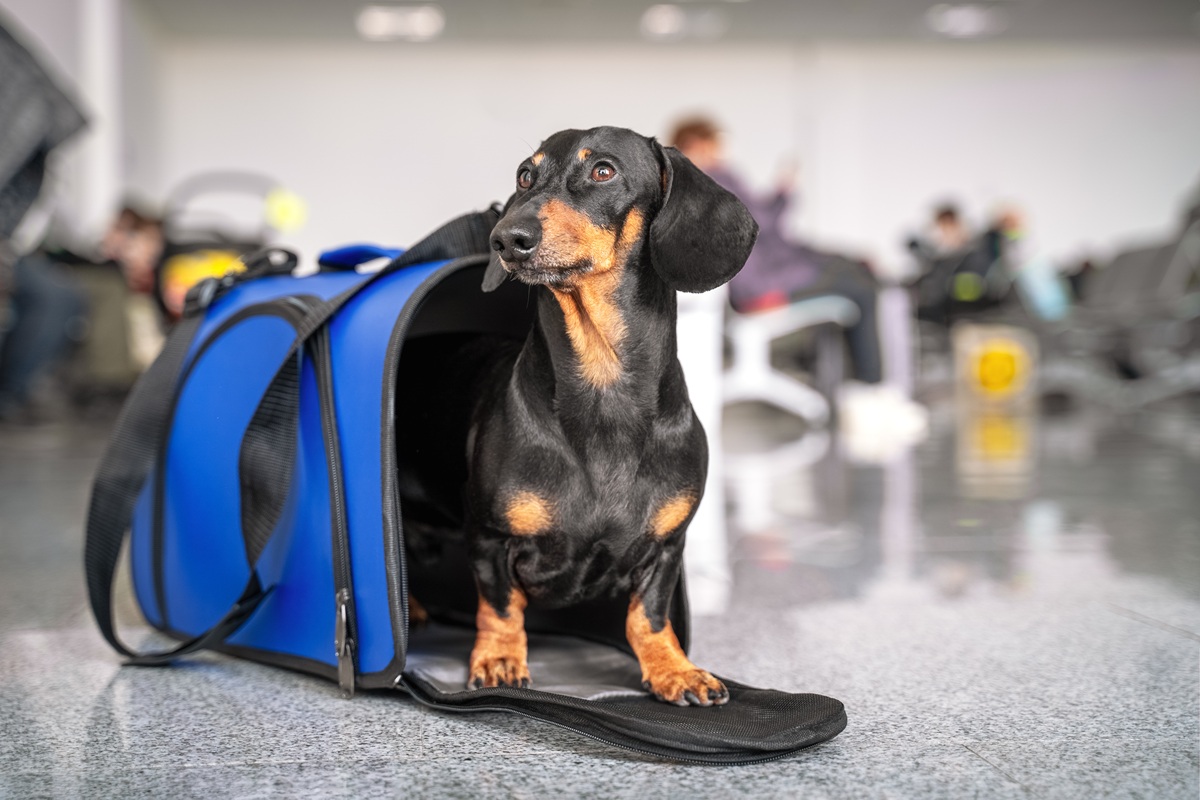Animal Chatter
By Iris Winston
Family trips are more fun if the furry family member is with you. Certainly, that goes for dogs, though most cats prefer to be cared for in their home territory, while the family is away.

But, travelling with pets, whether on a long-distance vacation by automobile or plane or on a local outing, requires just as much forethought and care as travelling with a small child.
Some people choose to have their dogs ride in crates inside the vehicle, a safe option particularly for animals already used to being crated for short periods. Others choose to use animal seat belts—basically harness that are attached to a car seat belt. (While certainly a better option than leaving a dog unrestrained on the passenger seat, seat belts vary in type and quality, so take care if you choose this route.)
Using a barrier to separate the rear portion of an SUV or van gives a larger dog more freedom and can be made almost as comfortable as home base when equipped with a dog bed, a favourite toy and a non-spill dog bowl filled with water. (An extra water bottle is a sensible precaution on particularly warm days.) This setup also means that the dog is not able to stick his head out of a window. While dogs enjoy the experience, their being exposed to the blowing debris and dust is harmful to their eyes and ears.
The other vital aspect of safe dog travel in any weather is sufficient air. How many times have you heard of an animal or a child suffocating in a vehicle after being left for “just a minute” with all the windows closed? When it is bitterly cold or extremely hot and you don’t know how long you will have to leave your dog in the vehicle, it is kinder to leave him at home, even if you get the sad-eyed stare as you go out of the door. If you are driving across the country with him, avoid leaving him alone in the car and make sure he has access to fresh air at all times.
The more you know before you go anywhere, the easier it is to accommodate your pet’s needs. For instance, on a local shopping trip, check out which stores allow dogs other than service dogs. Indigo welcomes dogs. Winners allows them (preferring small dogs that can sit in shopping carts). On longer trips, call ahead, google or check with the Canadian Automobile Association to find out which hotels and motels allow pets, whether there is an extra charge and what their rules are for the animals.
 If you are crossing international borders, by car or plane, take a pre-trip visit to the vet for a health check. Update any shots, particularly for rabies or any diseases known to be a problem in the destination area. Vaccination certificates almost function as dog passports. The veterinarian will also provide a note about any special food requirements, if that type may not be available at your destination and you need to carry some with you. Also, make sure you have all the paperwork with you; see cdc.gov/importation/dogs for details about taking your dog into the U.S.
If you are crossing international borders, by car or plane, take a pre-trip visit to the vet for a health check. Update any shots, particularly for rabies or any diseases known to be a problem in the destination area. Vaccination certificates almost function as dog passports. The veterinarian will also provide a note about any special food requirements, if that type may not be available at your destination and you need to carry some with you. Also, make sure you have all the paperwork with you; see cdc.gov/importation/dogs for details about taking your dog into the U.S.
Air travel is relatively comfortable for small dogs. In most cases, they are allowed to ride in the cabin with you, provided that their crate (usually the soft-sided variety) fits under the seat in front. Larger dogs are forced to ride in the cargo area of the plane in a hard-sided airline-approved crate. A few measures help to reduce your pet’s stress level, keep him more comfortable and you less worried through the journey. Time the last feed before the trip so that when you take him for a long walk just before the plane ride he can rest more comfortably during the flight. Whenever possible, book a direct flight when you are travelling with an animal. Then ensure he is safely on board before takeoff by checking with airplane attendants as often as necessary.
While most airlines allow a limited number of pets per flight for a small charge, each one has a long list of rules, so it is important to reserve early and check the details, particularly if a connecting flight with a different carrier is involved. Some dog breeds are not allowed to ride as cargo, because they are sensitive to temperature changes, have some difficulty breathing or are particularly strong, so it is vital to ensure that your pet is cleared for travel ahead of time.
Simply put, travelling with pets is a matter of carefully preparing before any journey and doing all you can to keep your animal safe and comfortable throughout the trip.
Almonte, Ontario, writer Iris Winston is a former Executive Director of the Canadian Federation of Humane Societies. She has been an animal lover all her life. Her pets have always been important members of her family.






